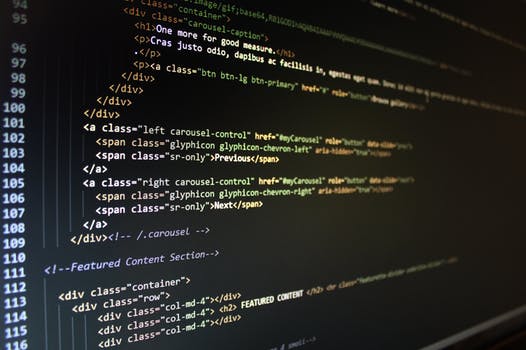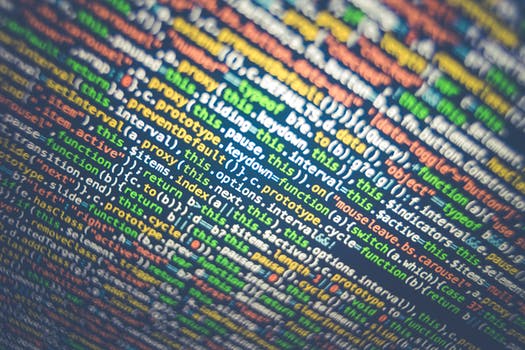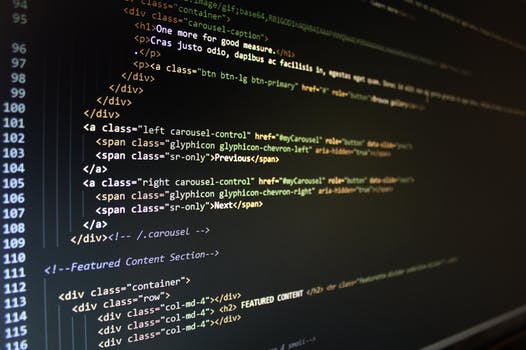TheDeveloperBlog.com
C-Sharp | Java | Python | Swift | GO | WPF | Ruby | Scala | F# | JavaScript | SQL | PHP | Angular | HTML
Python Datetime Methods: Date, Timedelta
Use the datetime module. Parses date strings and perform other useful tasks.Arguments: The first argument is a string containing date information. The second argument is the format string.
Format codes
B: The full month name.
d: The digit of the day of the month.
Y: The four-digit year.
Python program that uses strptime
from datetime import datetime
# Input string.
s = "August 16, 2012"
# Use strptime.
d = datetime.strptime(s, "%B %d, %Y")
print(d)
Output
2012-08-16 00:00:00
Python program that uses datetime for exact date
from datetime import datetime
# This is 20017, march 3, at 5:30 in the morning.
# ... Hope you like getting up early.
result = datetime(2017, 3, 1, 5, 30)
print("DATETIME", result)
# Verify the month.
print("MONTH", result.month)
Output
DATETIME 2017-03-01 05:30:00
MONTH 3
Here: We introduce a method called yesterday(). It calls today() and then subtracts a timedelta of 1 day.
Tip: A timedelta can be subtracted or added to a date object. In this way, we compute yesterday, today and any other relative day.
Python program that returns yesterday
from datetime import date
from datetime import timedelta
def yesterday():
# Get today.
today = date.today()
# Subtract timedelta of 1 day.
yesterday = today - timedelta(days=1)
return yesterday
print(date.today())
print(yesterday())
Output
2013-02-21
2013-02-20
Info: Helper methods, such as tomorrow and yesterday, are a useful abstraction in certain programs. They are reusable.
Python program that gets tomorrow
from datetime import date
from datetime import timedelta
def tomorrow():
# Add one day delta.
return date.today() + timedelta(days=1)
print(date.today())
print(tomorrow())
Output
2013-02-21
2013-02-22
Here: We create a list and append four new dates to it. These are all dates in the future. They are not chronologically ordered.
Then: We invoke the sort method on the list. In a for-loop, we display the dates, now ordered from first to last in time.
Python program that sorts date list
from datetime import date, timedelta
# Create a list of dates.
values = []
values.append(date.today() + timedelta(days=300))
values.append(date.today() + timedelta(days=2))
values.append(date.today() + timedelta(days=1))
values.append(date.today() + timedelta(days=20))
# Sort the list.
values.sort()
# Display.
for d in values:
print(d)
Output
2013-10-13
2013-10-14
2013-11-01
2014-08-08
Here: In this program, we subtract one hour from one day. And, as you might expect, the result is 23 hours.
Python program that uses timedelta
from datetime import timedelta
# This represents 1 day.
a = timedelta(days=1)
# Represents 1 hour.
b = timedelta(hours=1)
# Subtract 1 hour from 1 day.
c = a - b
print(c)
Output
23:00:00
Note: Large units like years, and small units, like nanoseconds, are not included in the Timedelta calls.
Timedelta arguments, smallest to largest
microseconds,
milliseconds,
seconds,
minutes,
hours,
days,
weeks
Float: In many programs we prefer a date type, not a float type. Dates are easier to understand and print.
So: We use the fromtimestamp method from the date module. This converts, correctly, the floats to dates.
Tip: I verified that the three dates are correct in this program according to Windows 8.1.
Python program that gets timestamps, converts to dates
from os import path
from datetime import date
# Get access, modification and creation time.
a = path.getatime("/enable1.txt")
m = path.getmtime("/enable1.txt")
c = path.getctime("/enable1.txt")
# Display the times.
print(a, m, c)
# Convert timestamps to dates.
a2 = date.fromtimestamp(a)
m2 = date.fromtimestamp(m)
c2 = date.fromtimestamp(c)
print(a2, m2, c2)
Output, format edited
1360539846.3326 1326137807.9652 1360539846.3326
2013-02-10 2012-01-09 2013-02-10
Here: We get today. We then add one to ten days to today. This yields the next 10 days.
RangePython program that gets future dates, range
from datetime import date, timedelta
# Start with today.
start = date.today()
print(start)
# Add 1 to 10 days and get future days.
for add in range(1, 10):
future = start + timedelta(days=add)
print(future)
Output
2014-04-21
2014-04-22
2014-04-23
2014-04-24
2014-04-25
2014-04-26
2014-04-27
2014-04-28
2014-04-29
2014-04-30
So: The seconds returned by this program equal 46 years—the example is being tested in 2016.
Quote: Return the time in seconds since the epoch as a floating point number.
Time: Python.orgPython program that uses time method
import time
# Get current seconds.
current = time.time()
print("Current seconds:", current)
Output
Current seconds: 1471905804.3763597
Days: Month days is the index of the day in the current month. So the 22nd of a month has "mday" of 22—this begins at index 1 not 0.
Also: Weekdays and year days are indexes within those larger time ranges. Monday is "wday" 0.
Python program that uses struct_time
import time
# Get a struct indicating the current time.
current = time.gmtime()
# Get year.
print("Year:", current.tm_year)
# Get month.
print("Month:", current.tm_mon)
# Get day of month.
print("Month day:", current.tm_mday)
# Get hour.
print("Hour:", current.tm_hour)
# Get minute.
print("Minute:", current.tm_min)
# Get seconds.
print("Second:", current.tm_sec)
# Get day of week.
print("Week day:", current.tm_wday)
# Get day of year.
print("Year day:", current.tm_yday)
# Get whether daylight saving time.
print("Is DST:", current.tm_isdst)
Output
Year: 2016
Month: 8
Month day: 22
Hour: 22
Minute: 48
Second: 8
Week day: 0
Year day: 235
Is DST: 0Version 1: This loop access date.today() once on each iteration through the loop. It runs much slower.
Version 2: The date.today() call is cached in a variable before the loop runs. This makes each iteration much faster. We hoist the call.
Result: This optimization clearly improves the performance of accessing a date. But it comes with serious limitations.
Python program that benchmarks cached date
import time
from datetime import date
# Time 1.
print(time.time())
# Version 1: accesses today in a loop.
i = 0
while i < 100000:
t = date.today()
if t.year != 2013:
raise Exception()
i += 1
# Time 2.
print(time.time())
# Version 2: accesses today once.
i = 0
t = date.today()
while i < 100000:
if t.year != 2013:
raise Exception()
i += 1
# Time 3.
print(time.time())
Output
1361485333.238
1361485333.411 Loop 1 = 0.173
1361485333.435 Loop 2 = 0.024Quote: An aware object has sufficient knowledge of applicable algorithmic and political time adjustments, such as time zone and daylight saving time information.... A naive object does not....
Datetime: Python.orgRelated Links:
- Python global and nonlocal
- Python not: If Not True
- Python Convert Decimal Binary Octal and Hexadecimal
- Python Tkinter Scale
- Python Tkinter Scrollbar
- Python Tkinter Text
- Python History
- Python Number: random, float and divmod
- Python Tkinter Toplevel
- Python Tkinter Spinbox
- Python Tkinter PanedWindow
- Python Tkinter LabelFrame
- Python Tkinter MessageBox
- Python Website Blocker
- Python Console Programs: Input and Print
- Python Display Calendar
- Python Check Number Odd or Even
- Python readline Example: Read Next Line
- Python Anagram Find Method
- Python Any: Any Versus All, List Performance
- Python Filename With Date Example (date.today)
- Python Find String: index and count
- Python filter (Lambda Removes From List or Range)
- Python ASCII Value of Character
- Python Sum Example
- Python make simple Calculator
- Python Add Two Matrices
- Python Multiply Two Matrices
- Python SyntaxError (invalid syntax)
- Python Transpose Matrix
- Python Remove Punctuation from String
- Python Dictionary items() method with Examples
- Python Dictionary keys() method with Examples
- Python Textwrap Wrap Example
- Python Dictionary popitem() method with Examples
- Python Dictionary pop() method with Examples
- Python HTML: HTMLParser, Read Markup
- Python Tkinter Tutorial
- Python Array Examples
- Python ord, chr Built Ins
- Python Dictionary setdefault() method with Examples
- Python Dictionary update() method with Examples
- Python Dictionary values() method with Examples
- Python complex() function with Examples
- Python delattr() function with Examples
- Python dir() function with Examples
- Python divmod() function with Examples
- Python Loops
- Python for loop
- Python while loop
- Python enumerate() function with Examples
- Python break
- Python continue
- Python dict() function with Examples
- Python pass
- Python Strings
- Python Lists
- Python Tuples
- Python Sets
- Python Built-in Functions
- Python filter() function with Examples
- Python dict Keyword (Copy Dictionary)
- Python Dictionary Order Benchmark
- Python Dictionary String Key Performance
- Python 2D Array: Create 2D Array of Integers
- Python Divmod Examples, Modulo Operator
- bin() in Python | Python bin() Function with Examples
- Python Oops Concept
- Python Object Classes
- Python Constructors
- Python hash() function with Examples
- Python Pandas | Python Pandas Tutorial
- Python Class Examples: Init and Self
- Python help() function with Examples
- Python IndentationError (unexpected indent)
- Python Index and Count (Search List)
- Python min() function with Examples
- Python classmethod and staticmethod Use
- Python set() function with Examples
- Python hex() function with Examples
- Python id() function with Examples
- Python sorted() function with Examples
- Python next() function with Examples
- Python Compound Interest
- Python List insert() method with Examples
- Python Datetime Methods: Date, Timedelta
- Python setattr() function with Examples
- Python 2D List Examples
- Python Pandas Data operations
- Python Def Methods and Arguments (callable)
- Python slice() function with Examples
- Python Remove HTML Tags
- Python input() function with Examples
- Python enumerate (For Index, Element)
- Python Display the multiplication Table
- Python int() function with Examples
- Python Error: Try, Except and Raise
- Python isinstance() function with Examples
- Python oct() function with Examples
- Python startswith, endswith Examples
- Python List append() method with Examples
- Python NumPy Examples (array, random, arange)
- Python Replace Example
- Python List clear() method with Examples
- Python List copy() method with Examples
- Python Lower Dictionary: String Performance
- Python Lower and Upper: Capitalize String
- Python Dictionary Examples
- Python map Examples
- Python Len (String Length)
- Python Padding Examples: ljust, rjust
- Python Type: setattr and getattr Examples
- Python String List Examples
- Python String
- Python Remove Duplicates From List
- Python If Examples: Elif, Else
- Python Programs | Python Programming Examples
- Python List count() method with Examples
- Python List extend() method with Examples
- Python List index() method with Examples
- Python List pop() method with Examples
- Python Palindrome Method: Detect Words, Sentences
- Python Path: os.path Examples
- Python List remove() method with Examples
- Python List reverse() method with Examples
- Top 50+ Python Interview Questions (2021)
- Python List sort() method with Examples
- Python sort word in Alphabetic Order
- abs() in Python | Python abs() Function with Examples
- Python String | encode() method with Examples
- all() in Python | Python all() Function with Examples
- any() in Python | Python any() Function with Examples
- Python Built In Functions
- ascii() in Python | Python ascii() Function with Examples
- Python bytes, bytearray Examples (memoryview)
- bool() in Python | Python bool() Function with Examples
- bytearray() in Python | Python bytearray() Function with Examples
- Python Caesar Cipher
- bytes() in Python | Python bytes() Function with Examples
- Python Sum of Natural Numbers
- callable() in Python | Python callable() Function with Examples
- Python Set add() method with Examples
- Python Set discard() method with Examples
- Python Set pop() method with Examples
- Python math.floor, import math Examples
- Python Return Keyword (Return Multiple Values)
- Python while Loop Examples
- Python Math Examples
- Python Reverse String
- Python max, min Examples
- Python pass Statement
- Python Set remove() method with Examples
- Python Dictionary
- Python Functions
- Python String | capitalize() method with Examples
- Python String | casefold() method with Examples
- Python re.sub, subn Methods
- Python subprocess Examples: subprocess.run
- Python Tkinter Checkbutton
- Python Tkinter Entry
- Python String | center() method with Examples
- Python Substring Examples
- Python pow Example, Power Operator
- Python Lambda
- Python Files I/O
- Python Modules
- Python String | count() method with Examples
- Python String | endswith() method with Examples
- Python String | expandtabs() method with Examples
- Python Prime Number Method
- Python String | find() method with Examples
- Python String | format() method with Examples
- Python String | index() method with Examples
- Python String | isalnum() method with Examples
- Python String | isalpha() method with Examples
- Python String | isdecimal() method with Examples
- Python Pandas Sorting
- Python String | isdigit() method with Examples
- Python Convert Types
- Python String | isidentifier() method with Examples
- Python Pandas Add column to DataFrame columns
- Python String | islower() method with Examples
- Python Pandas Reading Files
- Python Right String Part
- Python IOError Fix, os.path.exists
- Python Punctuation and Whitespace (string.punctuation)
- Python isalnum: String Is Alphanumeric
- Python Pandas Series
- Python Pandas DataFrame
- Python Recursion Example
- Python ROT13 Method
- Python StringIO Examples and Benchmark
- Python Import Syntax Examples: Modules, NameError
- Python in Keyword
- Python iter Example: next
- Python Round Up and Down (Math Round)
- Python List Comprehension
- Python Collection Module
- Python Math Module
- Python OS Module
- Python Random Module
- Python Statistics Module
- Python String Equals: casefold
- Python Sys Module
- Top 10 Python IDEs | Python IDEs
- Python Arrays
- Python Magic Method
- Python Stack and Queue
- Python MySQL Environment Setup
- Python MySQL Database Connection
- Python MySQL Creating New Database
- Python MySQL Creating Tables
- Python Word Count Method (re.findall)
- Python String Literal: F, R Strings
- Python MySQL Update Operation
- Python MySQL Join Operation
- Python Armstrong Number
- Learn Python Tutorial
- Python Factorial Number using Recursion
- Python Features
- Python Comments
- Python if else
- Python Translate and Maketrans Examples
- Python Website Blocker | Building Python Script
- Python Itertools Module: Cycle and Repeat
- Python Operators
- Python Int Example
- Python join Example: Combine Strings From List
- Python Read CSV File
- Python Write CSV File
- Python Read Excel File
- Python Write Excel File
- Python json: Import JSON, load and dumps
- Python Lambda Expressions
- Python Print the Fibonacci sequence
- Python format Example (Format Literal)
- Python Namedtuple Example
- Python SciPy Tutorial
- Python Applications
- Python KeyError Fix: Use Dictionary get
- Python Resize List: Slice and Append
- Python String | translate() method with Examples
- Python Copy List (Slice Entire List)
- Python None: TypeError, NoneType Has No Length
- Python MySQL Performing Transactions
- Python String | isnumeric() method with Examples
- Python MongoDB Example
- Python String | isprintable() method with Examples
- Python Tkinter Canvas
- Python String | isspace() method with Examples
- Python Tkinter Frame
- Python Tkinter Label
- Python Tkinter Listbox
- Python String | istitle() method with Examples
- Python Website Blocker | Script Deployment on Linux
- Python Website Blocker | Script Deployment on Windows
- Python String | isupper() method with Examples
- Python String split() method with Examples
- Python Slice Examples: Start, Stop and Step
- Python String | join() method with Examples
- Python String | ljust() method with Examples
- Python Sort by File Size
- Python Arithmetic Operations
- Python String | lower() method with Examples
- Python Exception Handling | Python try except
- Python Date
- Python Regex | Regular Expression
- Python Sending Email using SMTP
- Python Command Line Arguments
- Python List Comprehension Examples
- Python Assert Keyword
- Python Set Examples
- Python Fibonacci Sequence
- Python Maze Pathfinding Example
- Python Memoize: Dictionary, functools.lru_cache
- Python Timeit, Repeat Examples
- Python Strip Examples
- Python asyncio Example: yield from asyncio.sleep
- Python String Between, Before and After Methods
- Python bool Use (Returns True or False)
- Python Counter Example
- Python frozenset: Immutable Sets
- Python Generator Examples: Yield, Expressions
- Python CSV: csv.reader and Sniffer
- Python globals, locals, vars and dir
- Python abs: Absolute Value
- Python gzip: Compression Examples
- Python Function Display Calendar
- Python Display Fibonacci Sequence Recursion
- Python String | lstrip() method with Examples
- Python del Operator (Remove at Index or Key)
- Python String | partition() method with Examples
- Python String | replace() method with Examples
- Python Zip Examples: Zip Objects
- Python String | rfind() method with Examples
- Python String | rindex() method with Examples
- Python String rjust() method with Examples
- Python String rpartition() method with Examples
- Python String rsplit() method with Examples
- Python Area Of Triangle
- Python Quadratic Equation
- Python swap two Variables
- Python Generate Random Number
- Python Convert Kilometers to Miles
- Python Convert Celsius to Fahrenheit
- Python Check Number Positive Negative or Zero
- Python Check Leap Year
- Python Check Prime Number
- Top 40 Python Pandas Interview Questions (2021)
- Python Check Armstrong Number
- Python SQLite Example
- Python Tkinter Button
- Python Find LCM
- Python Find HCF
- Python Tuple Examples
- Python String | rstrip() method with Examples
- Python String splitlines() method with Examples
- Python String | startswith() method with Examples
- Python String | swapcase() method with Examples
- Python Truncate String
- Python String | upper() method with Examples
- Python for: Loop Over String Characters
- Python String | zfill() method with Examples
- Python Sort Examples: Sorted List, Dictionary
- Python XML: Expat, StartElementHandler
- Python Urllib Usage: Urlopen, UrlParse
- Python File Handling (with open, write)
- Python Example
- Python variables
- Python Random Numbers: randint, random.choice
- Python assert, O Option
- Python Data Types
- Python keywords
- Python literals
- Python MySQL Insert Operation
- Python MySQL Read Operation
- Python ascii Example
- Python ASCII Table Generator: chr
- Python Range: For Loop, Create List From Range
- Python re.match Performance
- Python re.match, search Examples
- Python Tkinter Menubutton
- Python Tkinter Menu
- Python Tkinter Message
- Python Tkinter Radiobutton
- Python List Examples
- Python Split String Examples